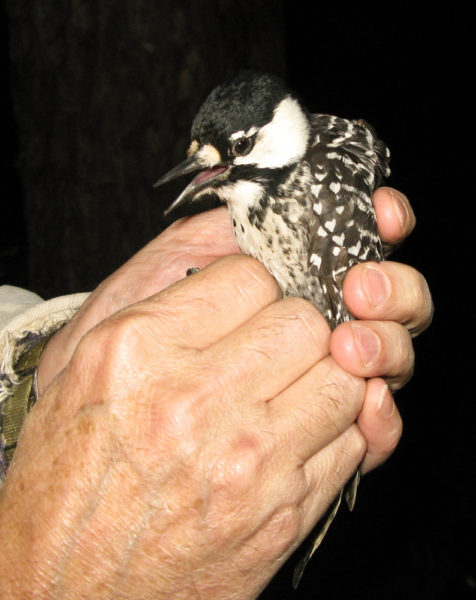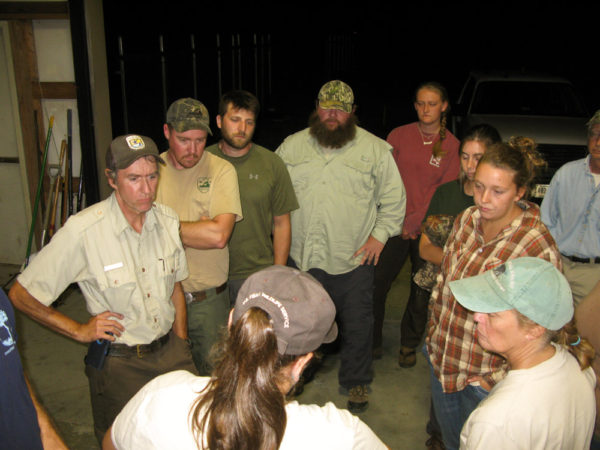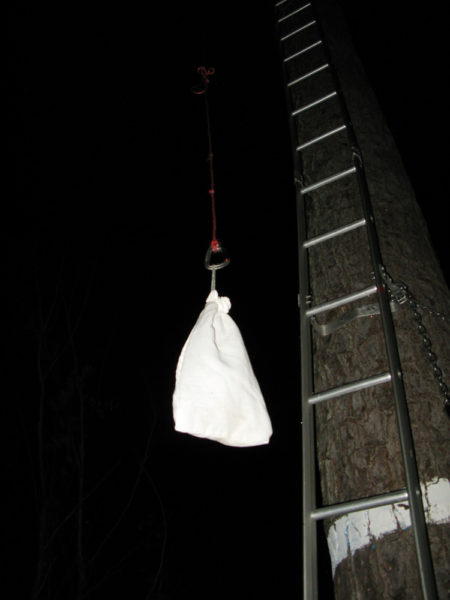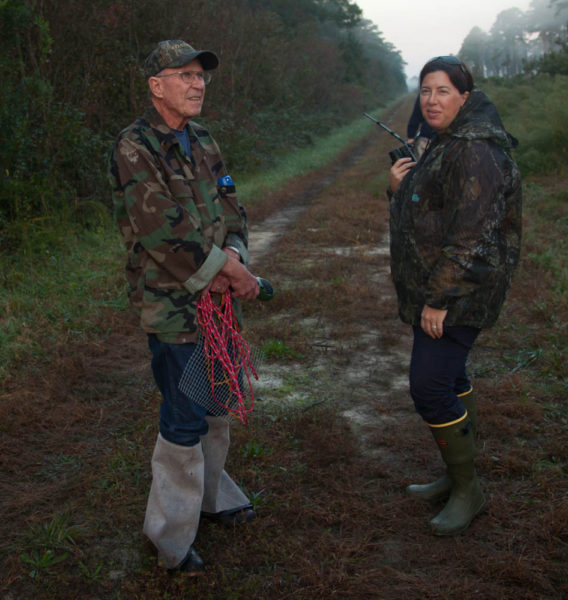Moving Woodpeckers 2
OspreyWatch Anniversary
January 11, 2017
Grace Returns to North Carolina Jan 13 2017
January 16, 2017
Following the historic and successful move of eight red-cockaded woodpeckers into the Great Dismal Swamp during the fall of 2015, the multi-state and multi-agency coalition gathered again in October 2016 to execute the second of a scheduled three-year commitment to move woodpeckers. The effort was successful despite the wrath of the weather gods.

Male red-cockaded woodpecker after arrival at the Great Dismal Swamp National Wildlife Refuge. Photo by Bryan Watts.
The Great Dismal Swamp, the northernmost of the great humid swamp forests of the South, received more than 20 inches of rain in the run up to the 2016 move. In late September, Tropical Storm Julia moved north along the Atlantic Coast and stalled over Hampton Roads, dumping more than 12 inches of rain on the swamp. Just one month later Hurricane Matthew, one of the most destructive hurricanes in recent memory, made its way up the coast dropping another 12 inches of rain on the swamp. Slow to drain, the swamp held a tremendous amount of water in the week before the scheduled woodpecker move, with many of the trails requiring waders to slosh through. In addition to the standing water, there was just enough time following the rains to create a dramatic hatch of mosquitoes throughout the swamp.

Woodpecker crew gathers around Kelly Morris around 2:30 AM to receive field assignments for placement of woodpeckers. Photo by Bryan Watts.
After much deliberation about the post-storm conditions, Will McDearman, National Recovery Coordinator, and Nancy Jordan, maestro of the Carolina Sandhills woodpeckers, decided in true field biologist fashion to move forward and “get ‘er done.” This decision triggered a convergence of woodpecker biologists on Carolina Sandhills National Wildlife Refuge from throughout the Southeast on 18 October to “roost” targeted birds. Roosting went as planned and the decision was made to capture and transport birds on the 19th. Four hatching-year males and four females were captured, boxed, and transported north on the evening of the 19th. The drive north was longer than usual due to road closures and detours related to Hurricane Matthew, but all birds arrived and were placed in artificial cavities for release by 4:30 AM. Screens were removed and birds were released into their new habitats at 7:00 AM.

Bird in a bag is pulled up to be placed in an artificial cavity for release at dawn. Photo by Bryan Watts.

Joe Davis (left) and Lauren Mowbray (right) wait along the road to be picked up after successfully releasing woodpeckers in the swamp at dawn. Photo by Bryan Watts.
A second translocation was conducted during the fall in order to even out the sex ratio and to give the population the maximum likelihood of forming new breeding pairs. On 14 November, a Virginia crew traveled to Carolina Sandhills National Wildlife Refuge and roosted, captured, and transported two hatching-year males for release in the swamp. The transport and release went off without any problems and both birds were released the next morning. With the successful conclusion of the second translocation of 2016, the refuge held seven males and eight females. A survey will be conducted in early spring of this year to determine retention of birds and follow-up breeding monitoring will be conducted in late April and May.
Written by Bryan Watts | bdwatt@wm.edu | (757) 221-2247
January 12, 2017



